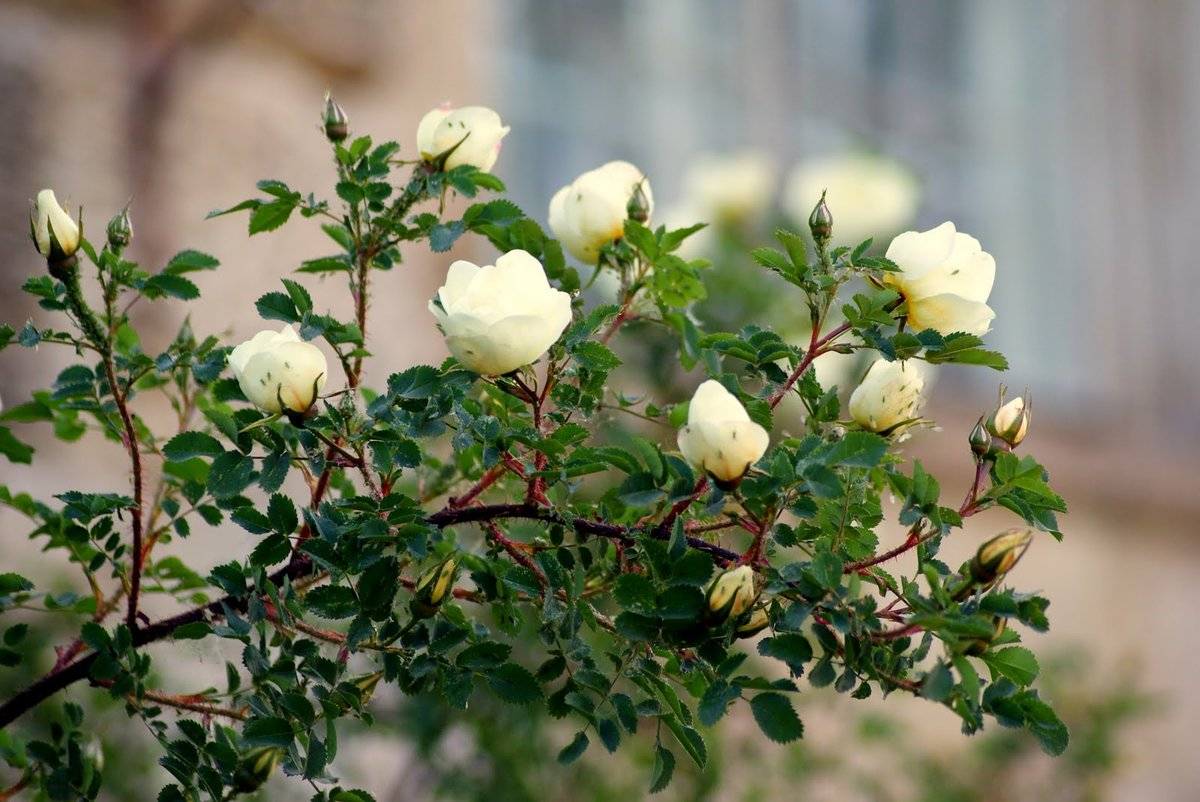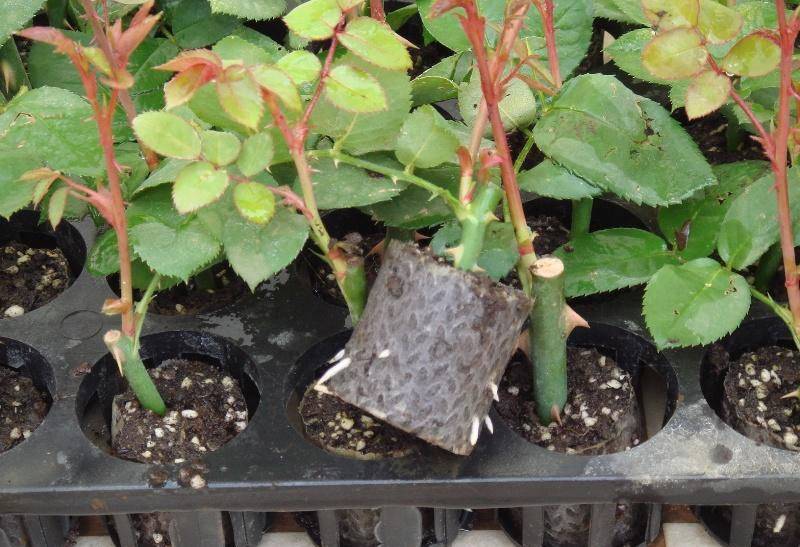How many leaves should a rose have
Content:
Rose is an extraordinary flower. Those who began to grow it "fall ill" for life. Beginners are interested in varieties, methods of care, breeding. The question of how many leaves a rose has is not an idle one. When buying a new type of plant, many recount the leaves to be sure that they are not taking wild.
How many leaves should a rose have
Many experienced flower growers will answer that there should be 5 leaves. If there are more, this is a rosehip. The belief comes from a time when the number of varieties was limited, and the home flower really had only 5 leaves.
Today in the world there are more than 30 thousand varieties of cultivated roses. Nurseries grow new ones every year. They have 3-5, 7-9, 11-13 leaves. This is normal. The number of plates on one common petiole does not indicate the wild or horticultural identity of the culture.
The atypical number of leaves indicates that this culture was domesticated, but it has a great genetic memory. When new varieties are produced, the hybrid can "remember" the characteristic of its wild ancestor. Hence 7 and 9 leaves.
The difference between a climbing rose and a simple and bushy variety of roses
At the time of the growing season, it is difficult to confuse a climbing rose with a bush rose, simple and standard. Distinctive features of climbing culture:
- long, 3-5 meters or more, shoots;
- spreading crown;
- flexible branches that are easy to put in a shelter for the winter;
- dark color of the leaves;
- the presence of support.
But it is important not to confuse the desired variety with another type at the time of purchase. A simple recalculation of how many leaves a climbing rose has leaves nothing. Pay attention to the place where the roots and stems grow together.
Almost all seedlings of bush and common varieties are obtained by grafting. A cultivated bud is grafted onto a rosehip (budding), or a varietal cuttings are grown on the stock of a wild "relative" (copulating). In the place of the scion, on the root collar, a thickening is formed - according to it, the belonging of the variety to ordinary or curly is determined.
Climbing varieties are propagated by layering and cuttings. Such species are called own-rooted, there are no outgrowths on the root collar. There are cases of vaccination, but extremely rarely - only if the breeding origin requires it.
This knowledge is important for novice florists. Seedlings in agricultural complex stores and nurseries are sold in containers with an open or closed root system. Moreover, wax is applied to the branches. It is necessary to look closely at the root collar and take it without growth if it is assumed that the plant should curl.
Climbing species get an advantage over the usual ones in that they do not give wild growth from the root, do not degenerate into rose hips.
Rose and rose hips - what is the difference
The two cultures are close relatives. Rosehip is a hardened plant that lives in the harsh conditions of different latitudes. Heat or searing frosts are not terrible for him. The shrub does not know pruning and fertilizing, therefore, it has a naturally powerful root system that can provide the plant with the necessary nutrition, micro- and macroelements from the soil where it grows.
Rose - delicate and capricious, lush flowering pleases only with good care.Knowing how many leaves a rose should have, how many a wild "relative", you can easily distinguish between plants.
But there are other signs:
- Shoots. In roses, they grow reddish, turn green as they grow. Rosehip immediately gives a green growth. New branches of a capricious beauty appear above the place of attachment of roots and stems. Rosehip throws them out immediately from the root.
- Thorns. There are large thorns on the branches of a cultivated flower, rarely grow. The wild "relative" is covered with smaller, but thin and sharp thorns.
- Leaves. Bright, glossy with a dense structure belongs to the rose. The rose hips got small, soft, with roundings at the tip.
Rose hips have 7 leaves on the petiole, as well as some varieties of decorative cultivated roses.
Which rose has 7 leaves
The selection work has given the roses a noble look and beauty. For a long time, man improved some types of wild-growing roses. This is a complex and lengthy process. It continues today in institutes and nurseries: not only new varieties appear, but also entire garden groups - the range is constantly growing.
Centuries-old changes, however, cannot, and are not intended, to destroy the gene pool. It persists and makes itself felt with an unusual number of sheets.
In other groups, the amount is different. So, a climbing rose has 7 leaves (Polka, Flammentants), and ground cover park crops (Lipstick, Kleinstrauchroz) have the same number.
This feature is also typical for the Floribund, the Pilgrim cultivar. When such roses throw out a shoot, do not cut it out, suspecting that this is a wild growth. Decorativeness does not suffer from the number of leaves.
Rose degenerates into a rosehip: what to do
Florists often observe how the varietal flower runs wild, turns into a dog rose. This happens with grafted roses.
Rosehip is a strong viable plant. In a situation where a weak and sensitive culture is grafted onto it, the root gives its own growth. If you do not fight it, the rose hips will suck the vital juices from the scion.
The twig appears in a beautiful green color, very prickly, with seven leaves on the petiole. It is developing rapidly and getting stronger. Soon, after 1-2 months, it becomes thick and long - up to one and a half meters.
It is necessary to prevent an undesirable scenario even at the stage of selecting seedlings. They are taken from trusted sellers, in nurseries. Immediately you need to make sure that there are no live buds on the rootstock - they will begin to grow first, overtaking the scion.
The risk of degeneration will decrease if the root collar is buried on the bayonet of a shovel, and not 5-7 cm, as gardeners recommend.
When the shoots did appear, they do the following to save the roses:
- They rake the earth, starting from the place where the growth appeared. They dig to the very root of the bush, determine where the wild boar began to grow from.
- Break out the wild scion. If it is already so strong that it is impossible to do it with your hands, cut off with a pruner. At the same time, you should not worry about the root - the cut is made deep, with some part of it.
- The "wound" is treated with iodine.
- The earth is leveled, compacted near the trunk.
- After 3-4 days, the plant is sprayed on the leaf with a superphosphate solution. For this, 50 g of fertilizer is dissolved in 1 liter of hot water. Then pour the composition into a bucket of liquid. This is done several times over the summer.
- Wild growth should not be cut off near the ground. From this, the wild begins to bush, the struggle will become more difficult.
Preventive pruning is carried out as the rose hips appear. The result is not always the case.
Then, in order to protect the plant and preserve its varietal qualities, the rose is transferred to its own roots:
- In early spring, when the ground has just thawed, a groove is dug next to the bushes.
- Last year's stem is laid in it, fixed with hairpins.
- Sprinkle with peat and humus.
- The end of the branch is left above the ground in an upright position.
The layering is looked after all season. It takes root. The next year, it is cut off from the mother bush, transplanted to a new place.
Rebirth occurs quickly if the cultivated graft lacks nutrition: poor soil, not regular feeding. The rose lags behind in development, and the roots of the rose hip begin to grow actively.
Work on the rebirth of rose bushes is ahead of the curve. Once a month, they dig up the ground near the root collar, examine it. Rosehip shoots, still weak and tender, break off, because they often grow parallel to the surface of the earth by a meter or more, and only then go up.
What roses do not run wild
Wild growth does not appear on self-rooted roses. They are not grafted onto strong rose hips, so they do not run wild. But such varieties are not resistant to adverse weather conditions, temperature extremes, and severe frosts. In the winter they are given a shelter. The climbing ones are removed from the trellises, laid in trenches, the bush ones are covered with spruce branches, they mulch strongly.
Own-rooted varieties are suitable for southern regions. Without grafted roses, flower gardens in the middle and northern latitudes will become much poorer - the range of native-rooted species is small. Therefore, flower growers choose between the opportunity to admire the variety of roses and the need to fight wild growth.
How many leaves a garden rose should have worries novice florists. But even experienced lovers of this flower do not always give the correct answer. Many believe that 5 leaves are a sign of a cultivated plant, and 7 are a wild rose. However, breeders bred varieties with 7, 9 or more plates on a common petiole. These are grafted species. They differ from rose hips not only in the number of leaves, but also in a number of other characteristics of varietal affiliation. Without proper care, a decorative flower can be reborn into a wild. To prevent this from happening, the shoots of the wild rose are identified in time, broken off.




















